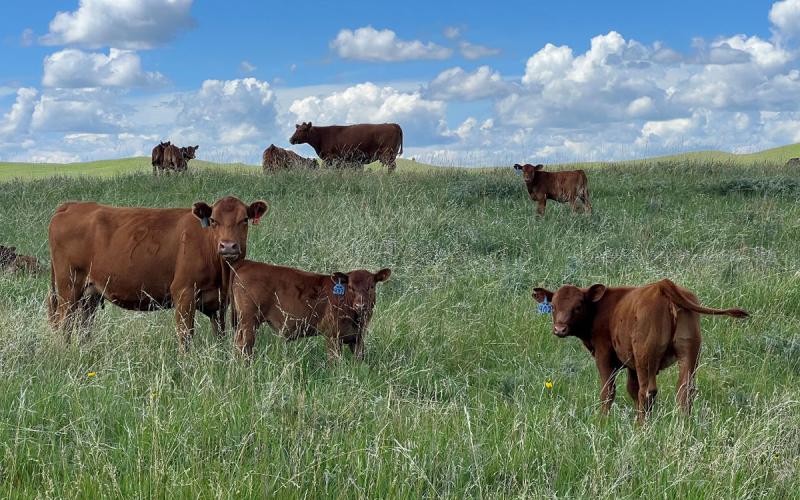Written collaboratively by Adam Varenhorst, Amanda Bachmann, Philip Rozeboom, Patrick Wagner, and Brad McManus.
Originally Submitted: April 26, 2024
In 2024, grasshoppers are likely to cause problems in areas of South Dakota due to large populations that were present in 2023 and the relatively late first hard freeze date observed in much of the state (Figure 1).
Due to recent rain events, much of South Dakota is reported as having a drought rating of no drought to abnormally dry. However, the northwestern edge of the state is still rated as moderate drought (Figure 2). Grasshopper populations are generally worse in drought-affected areas. They eventually move into crops once alternative food sources become less viable.

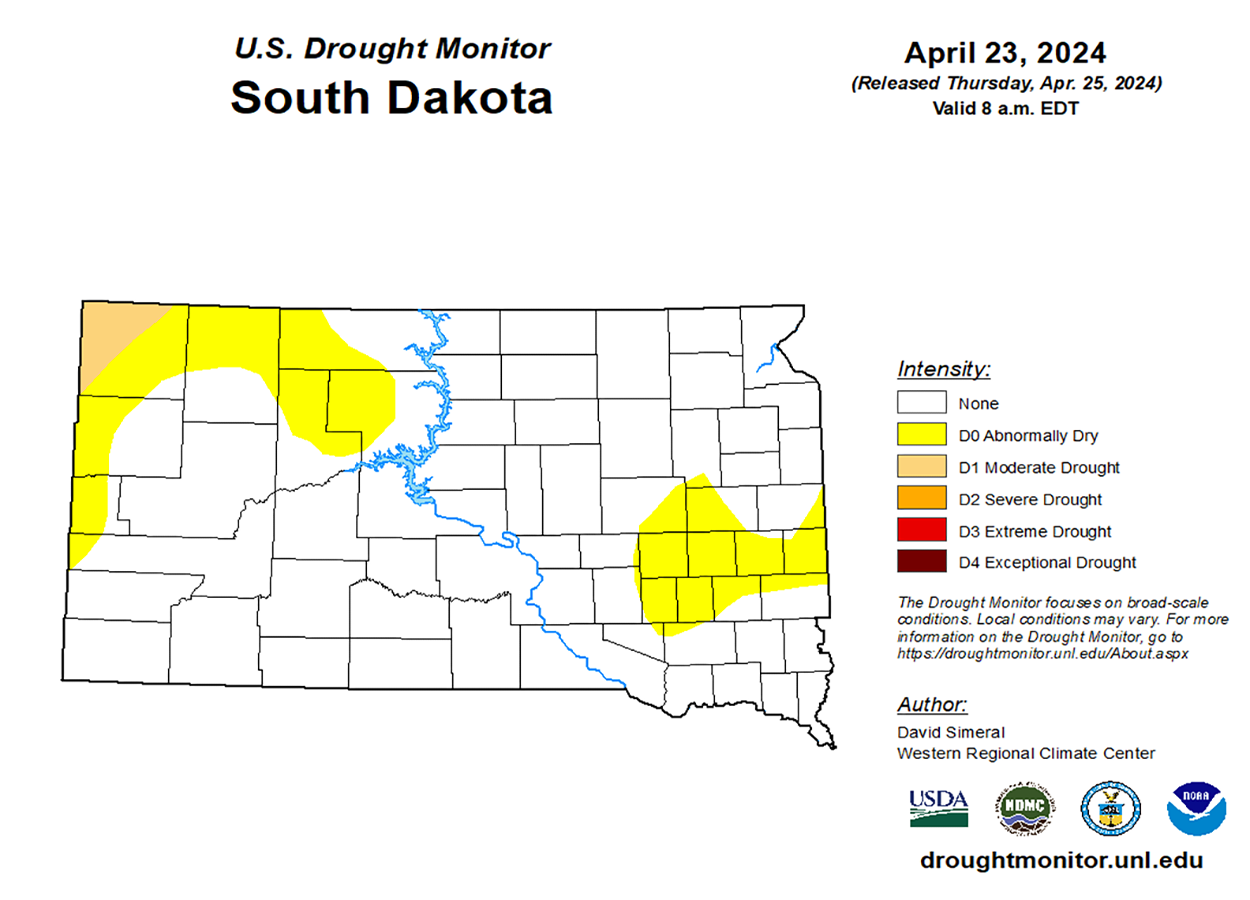
Annual Grasshopper Survey

The Animal and Plant Health Inspection Service (abbreviated as APHIS) of the USDA conducts an annual survey of grasshoppers in western South Dakota. The results from the 2023 survey indicate that there were areas in South Dakota that were at or above threshold (Figure 3). Some of these grasshopper hot spots are in the same areas that are currently experiencing drought. Although not surveyed, there were also areas in eastern South Dakota that had large grasshopper populations during 2023. In general, a large population of grasshoppers during the previous year is a pretty good indicator of areas that are likely to have grasshopper issues.
Scouting for grasshopper populations should begin shortly after planting and continue throughout the growing season in areas where grasshoppers were problematic in 2023. Grasshoppers can reduce stand counts early in the season, cause extensive defoliation, and damage the harvestable parts of the plants.
Identification
Although there are numerous grasshopper species present in South Dakota, there are only three species that routinely reach large populations. These include the two-striped grasshopper, redlegged grasshopper, and the differential grasshopper.
Two-Striped
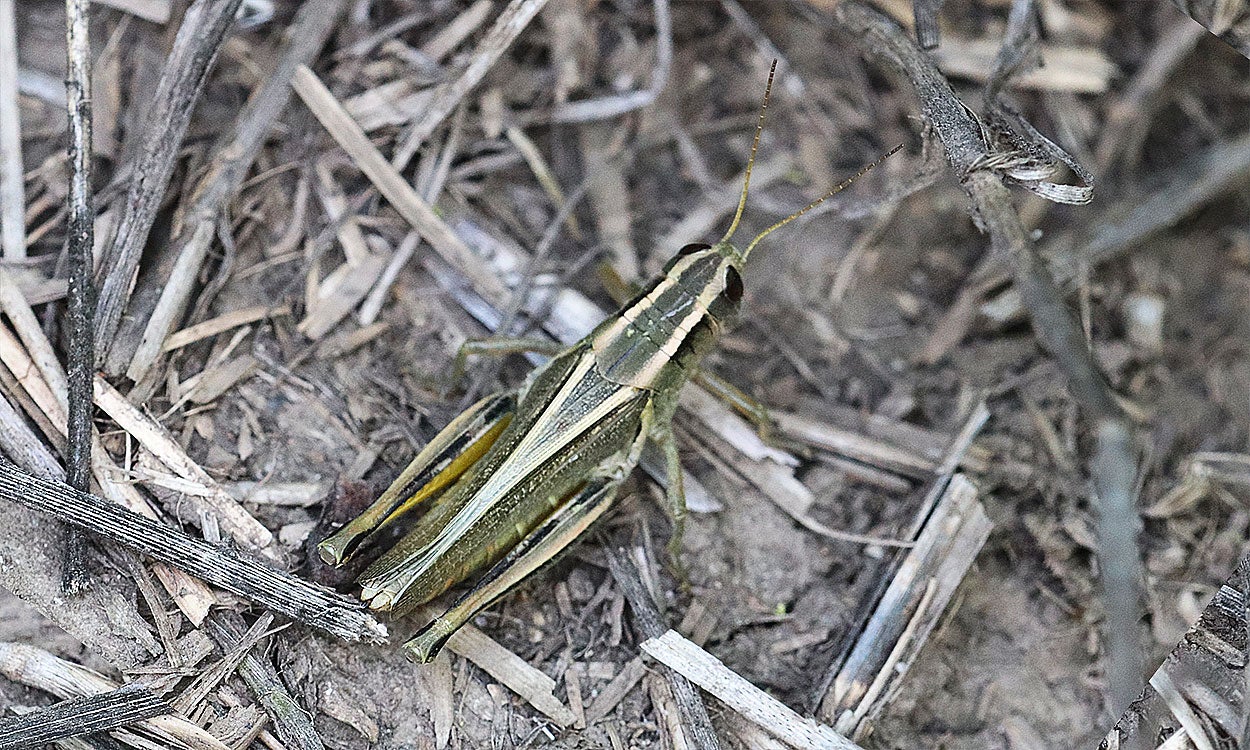
Two-striped grasshoppers get their name because of the two light yellow lines that are present on the back of their head, thorax, and abdomen (Figure 4). The lines eventually converge in the middle of the abdomen. Two-striped grasshoppers are tan to brown in color. The adults are approximately 1-1.5 inches long.
Redlegged
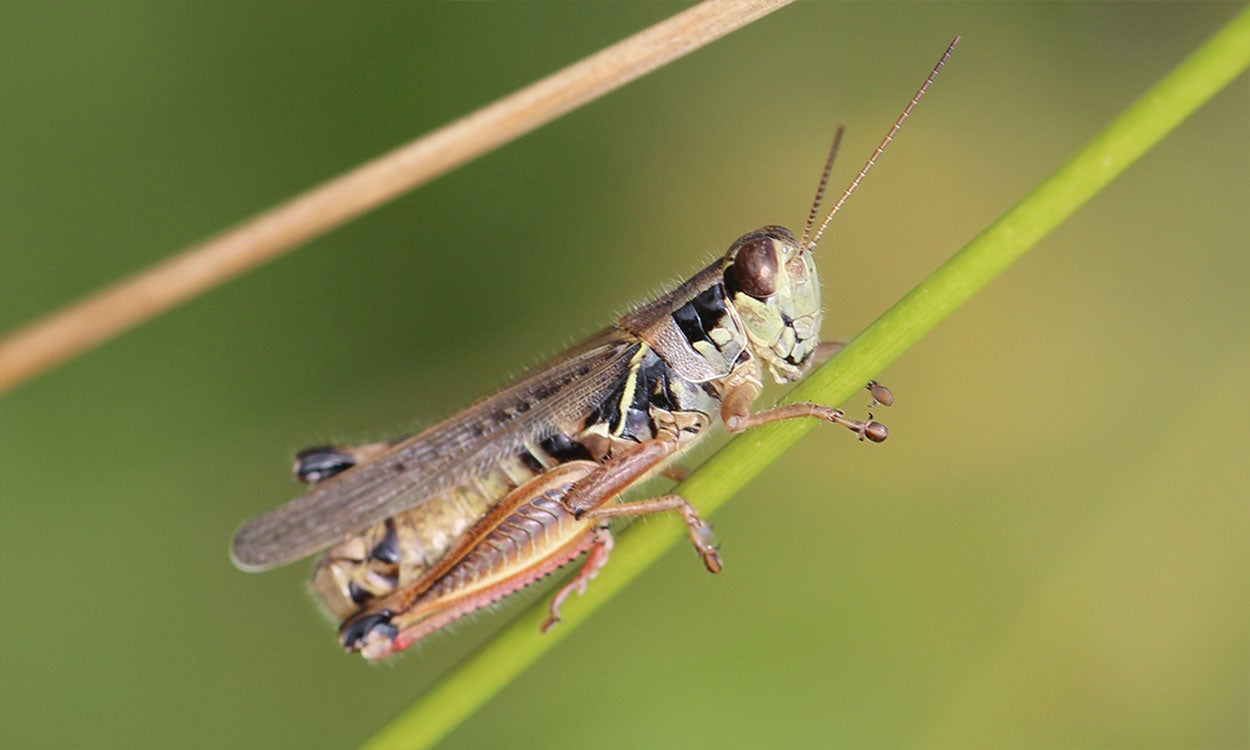
Redlegged grasshoppers get their name from their red hind leg segment (Figure 5). Their bodies range in color from green to tan with black markings and the adults are 0.66 of an inch to 1 inch long.
Differential
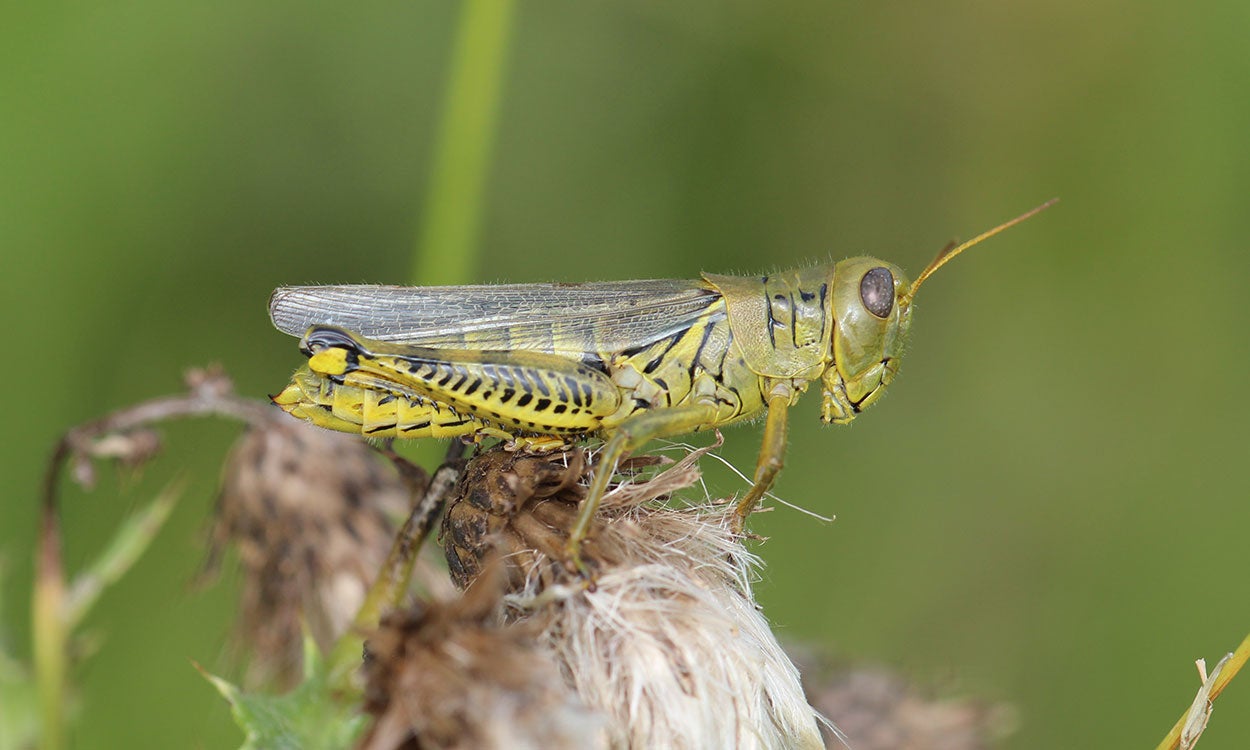
Differential grasshoppers vary in size from 1 to 1.5 inches long. Their bodies are green to yellow in color and they have black chevron markings on their hind legs (Figure 6).
Scouting and Management Options
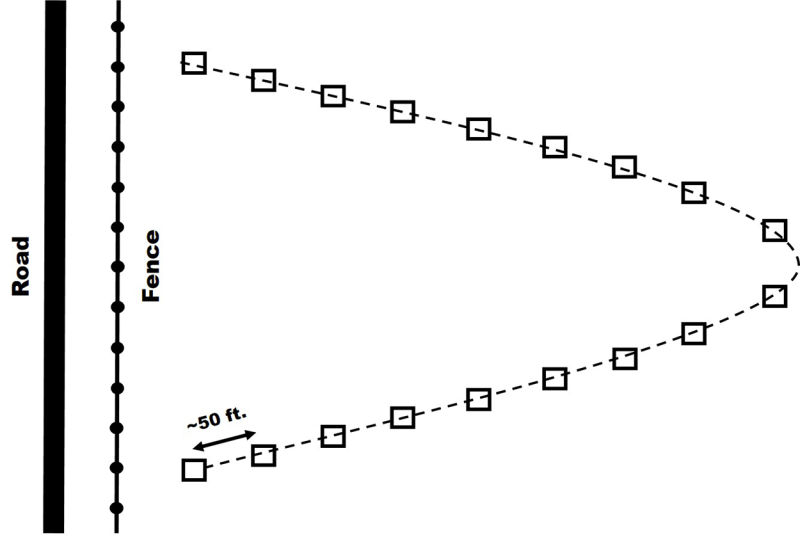
There are two scouting methods that can be used to determine if grasshopper populations are at or above threshold. The first method is visual counts. For visual counts, estimate a square yard in front of you and count the number of grasshoppers jumping out of the area as you slowly walk towards it. This method works for emerging crops as well as gardens. The second scouting method is sweep netting. For sweep netting, use a 15-inch diameter sweep net and capture grasshoppers in four pendulum swings (approximately one square yard of area) and count them. With either sampling method, we recommend repeating it several times in a pattern, such as the example in Figure 7, and then calculating the average for increased accuracy.
The threshold for grasshopper populations that was established by the United States Department of Agriculture (abbreviated as USDA) for grasslands is 15 to 20 nymphs or 8 to 14 adults per square yard. Nymphs can be distinguished from adults by their lack of wings. Adult grasshoppers will have fully formed wings.
For crops, we recommend scouting for nymphs and adults in field margins and within the fields. For field margins, management should be considered when nymph populations reach 50 to 75 per square yard and adult populations reach 21 to 40 per square yard. In the field, management should be considered when there are 30 to 45 nymphs per square yard or when there are 8 to 14 adults per square yard. Later in the season for corn, management should be considered if grasshoppers are clipping silks to within 0.5 inches of the ear tip or if the grasshoppers are feeding on the developing ears. For soybean, management should be considered if there is 20% defoliation present after flowering or if grasshoppers are observed feeding on the on developing pods. For sunflower, management should be considered if grasshoppers are feeding on the developing heads.
If thresholds are exceeded, an insecticide that is labeled for grasshopper management may be considered. A current list of insecticide sprays for use in soybean, corn and alfalfa can be found in the latest South Dakota Pest Management Guides.
In pastures and range, spreading poison grasshopper baits or baits containing Nosema locusta spores may be used to reduce populations. An insect growth regulator (abbreviated as IGR) containing diflubenzuron may be applied to inhibit grasshopper development early in the season while the populations are primarily nymphs. However, please note that IGRs have no effect on adult grasshoppers.
It’s also important to remember that large grasshopper populations can lead to increased populations of blister beetles during the following season. Areas that experienced increased grasshopper pressure in 2023 should also be monitored for increased blister beetle activity, especially in alfalfa fields.

